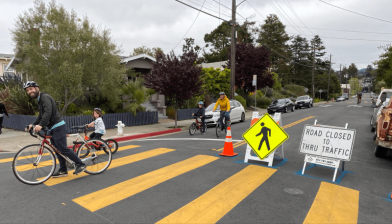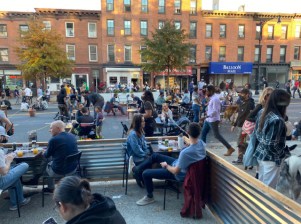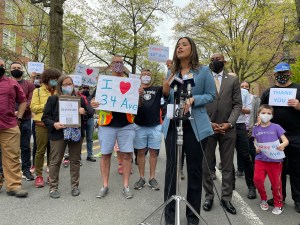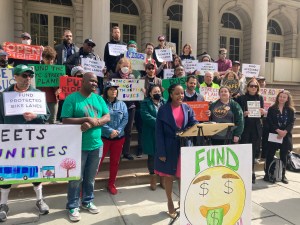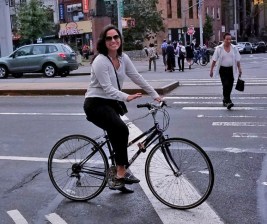Manhattan Council Member: Make ‘Open Streets’ Program More Equitable
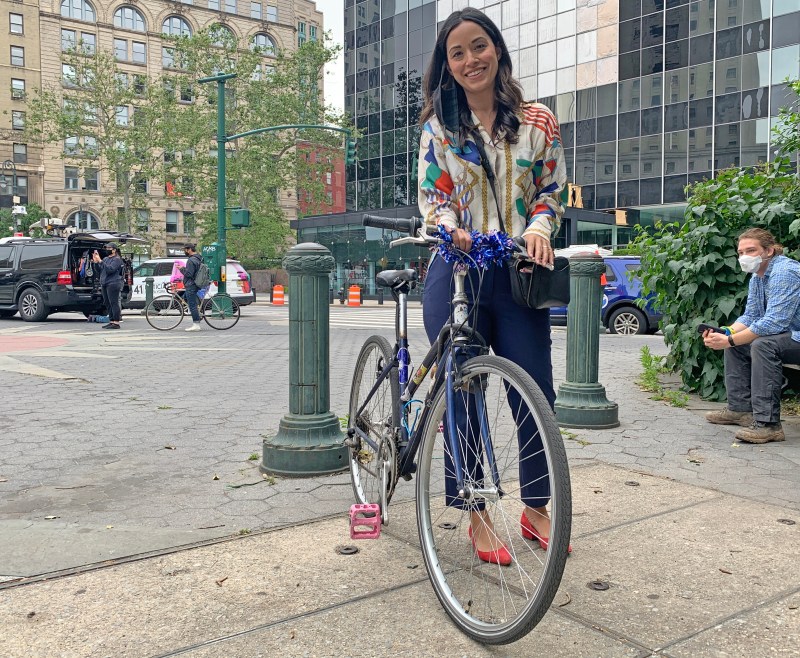
A Lower Manhattan Council Member threatened to pursue further legislation if the Department of Transportation does not address concerns about “equity and the unequal distribution of essential resources” in its open streets program.
Council Member Carlina Rivera said in a letter late last week to Mayor de Blasio and DOT Commissioner Polly Trottenberg that the mayor’s pandemic-inspired program to create room for socially responsible recreation in hard-hit neighborhoods is failing.
“This program has not been the model for equity that we must always be striving for in a city rife with injustice,” Rivera said, referring to the initial use of police manpower to a lack of city “resources” and engagement with communities.
“DOT and the Mayor’s Office must now look more proactively towards industrial neighborhoods, communities of color, and other areas where there often isn’t even the basic investments necessary for pedestrians to safely cross a major thoroughfare,” she added.

It was Rivera’s legislation calling for 75 miles of open streets, introduced in April, that pressured the mayor to announce he would go further, creating 100 miles of car-unfriendly roadways by the end of the summer (the mayor is up to about 70 miles, plus some temporary protected bike lanes, so far).
Rivera’s legislation was set aside after the mayor begin undertaking such a program on his own. But Rivera made it clear that the Council could easily pressure the mayor to create a better program.
“My legislation still remains in the City Council pipeline, and can always be revisited, amended, and passed immediately” if needed, she wrote.
Rivera’s letter comes as the city’s open streets program has been criticized for falling short of its initial promise to widely include areas that have suffered the most from the COVID-19 pandemic. Last month, Transportation Alternatives laced into the program for a lack of “vision and ambition.”

The distribution of open streets disenfranchises communities of color, the group said, citing data showing that only 20.5 percent of New Yorkers who live within walking distance of an open street are Black.
Days later, Streetsblog crunched more numbers and found that streets that are part of the program have a median income of about $20,000 more than the citywide median income of $60,762.
Beyond Rivera’s general call for more equity, she is calling for some specific changes in the program:
- Include the temporary bike lane program — which has been marred by drivers ignoring or moving the protective barrels — in the open streets program and add “more effective protective measures and painted markers.”
- Connect the random open streets to “form larger networks that connect neighborhoods rather than the simpler block closures that encompass the majority of the program.”
- Provide more and stronger barricades, with better signage.
- Expand the hours of the open streets, which are generally from 8 a.m. to 8 p.m., though many have truncated hours.
- Move towards making the program permanent by working with communities (as residents of Jackson Heights are already doing to protect their 34th Avenue open street).
When asked if he would like to keep 34th Ave an Open Street, Stan gets very big eyes and asks back “Is that a possibility?” He is out here every day with Julian and Sabrina—and they all deserve the answer: “Yes, it’s possible, of course it’s possible.” pic.twitter.com/ahQ3dsjveJ
— Radlerkönigin (@radlerkoenigin) August 16, 2020
Rivera also called on the city to include schools in the open streets program so that classes or activities can be held outdoors, part of a growing movement as the city nears the first day of schools in September.
Like the city DOT, Rivera said her goal in championing open streets was to “help the city reimagine and redistribute … street space to ameliorate a public health crisis that required us to socially distance.” But the city-run program “has failed to effectively address concerns regarding equity and the unequal distribution of essential resources that are unfortunately all too common traits of American transportation and urban planning,” she added.
We did not reach out to City Hall over the weekend, but in the past, mayoral spokespeople have hailed the mayor’s efforts.
“We’ve made enormous progress toward delivering on that goal [of equity and expansion],” said the spokesman, Mitch Schwartz. “There’s more work to do, and we’re not done adding streets yet – but we’re proud of this program,” which he added, is the “biggest in the country.”
Rivera’s letter is embedded below.

